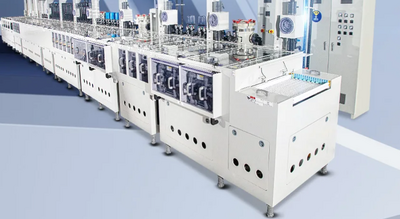Categories
Tags
-
#medicaltourismbiz
#reinforcement and lifting project repairs
#cold rolled galvanized welded carbon steel pipe
#8k series hydraulic mo
#ceramic glove molds
#common issues with anchor clamp control cables
#Medical Tourism
#flip flop green screen
#Third Generation
#Slim Disk Motor For Welding Machine
#cracks on the surface
#type hepa filter
#wool Acoustic Panel
#inserts brand
#Ejector Header SM
#headband for adults
#dispenser refill packs
Archives
How does the pcb stripping process system control the details o
-
The pcb stripping process system requires collaborative optimization from multiple dimensions such as process parameters, equipment design, material pretreatment and quality monitoring to control the uniformity of etching. The specific details are as follows:
1. Precise control of etching solution
Concentration and composition: The Baume concentration of ferric chloride solution is strictly controlled at 38-40 degrees to avoid uneven etching rates caused by local concentration differences. The mixed acid needs to be monitored in real time for the proportion of components, and dynamically adjusted through an online concentration detector to ensure the stability of the proportion of the main etching agent and additives (such as leveling agents).
Temperature and pH value: The temperature of the etching solution should be kept constant at 20-50℃ to avoid changes in the etching rate caused by temperature fluctuations. The pH value of the alkaline etching solution needs to be controlled to prevent local excessive acidity or alkalinity from affecting the uniformity of the reaction.
Circulation and stirring: When using spray etching, a circulation pump should be used to maintain uniform flow of the solution and avoid dead corners. Immersion etching requires mechanical stirring or ultrasonic vibration to ensure that the solution is in full contact with the metal surface.
2. Etching time and temperature management
Time control: The etching time should be set based on the material thickness and pattern complexity (such as 3-5 minutes), and adjusted through trial etching verification to avoid excessive etching leading to side etching or insufficient etching resulting in incomplete patterns.
Temperature gradient: The etching tank should be equipped with a temperature control system to ensure uniform temperature distribution. Local cooling is required in high-temperature areas to prevent local overheating from accelerating the reaction.
3. Optimization of the sprinkler system
Nozzle design: It adopts a multi-stage spray design. The front stage uses high pressure to quickly remove the surface oxide layer, the middle stage uses uniform spray to maintain the etching rate, and the rear stage uses low pressure for fine adjustment. The adjustable-angle nozzle ensures a consistent coverage Angle of the etching solution, avoiding differences in etching between the center and the edge.
Pressure and flow rate: The spray pressure needs to be evenly distributed and monitored and adjusted in real time through a pressure sensor. Flow rate control should form stable turbulence to avoid uneven etching caused by laminar flow.
4. Mask and resist process
Mask uniformity: Photosensitive ink or dry film should be evenly coated through screen printing or an automatic coater to avoid air bubbles, uneven thickness or edge defects. The exposure should adopt an automatic alignment system to ensure the accuracy of the pattern.
Development and curing: The concentration and temperature of the developer solution must be strictly controlled to avoid excessive development which may cause the pattern to become blurred. The curing process must be carried out in a constant temperature and humidity environment to ensure the adhesion of the anti-corrosion layer.
5. Equipment and process innovation
Intelligent control: Introduce AI algorithms to analyze historical etching data and automatically adjust etching time, spray pressure and temperature. A dynamic spray system is adopted to adjust parameters in real time according to the size of the workpiece and the density of the pattern.
Material pretreatment: The surface of stainless steel needs to be treated by pickling, electrolytic polishing or mechanical polishing to remove the oxide layer and roughness, ensuring a smooth surface. Etching parameters for different grades of stainless steel (such as 304 and 316) need to be adjusted specifically.
Post-treatment and quality inspection: After etching, the residual etching solution must be thoroughly cleaned, and the corrosion resistance should be enhanced through neutralization and passivation treatment. The etching depth, surface roughness and pattern consistency were detected by using a microscope and a three-coordinate measuring instrument.
6. Environmental Protection and safety
Waste liquid treatment: Etching waste liquid needs to be neutralized, precipitated and filtered before being discharged up to standard to avoid environmental pollution.
Operation protection: Operators must wear acid-resistant gloves, goggles and ventilation equipment to ensure a safe working environment.
Through the fine control of the above-mentioned multiple links, the pcb stripping process system can achieve uniform etching from micron-level precision parts to large decorative parts, meeting the high-precision requirements in the industrial, decorative and electronic fields, while taking into account the requirements of efficiency, cost and environmental protection.
pcb stripping process system https://www.jxxr-pcb.com/DES-Machine.html





